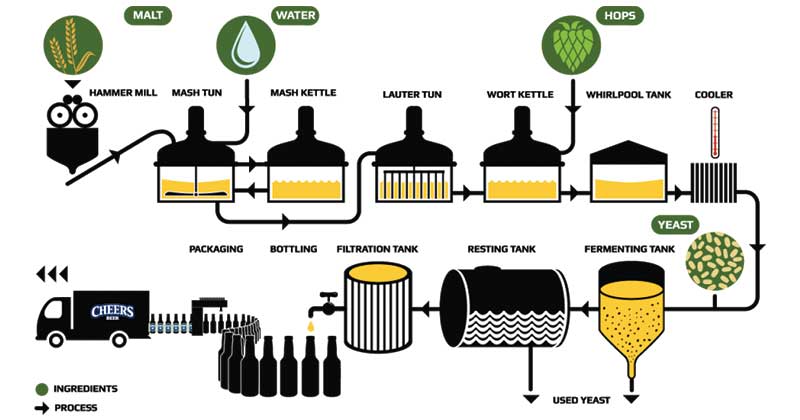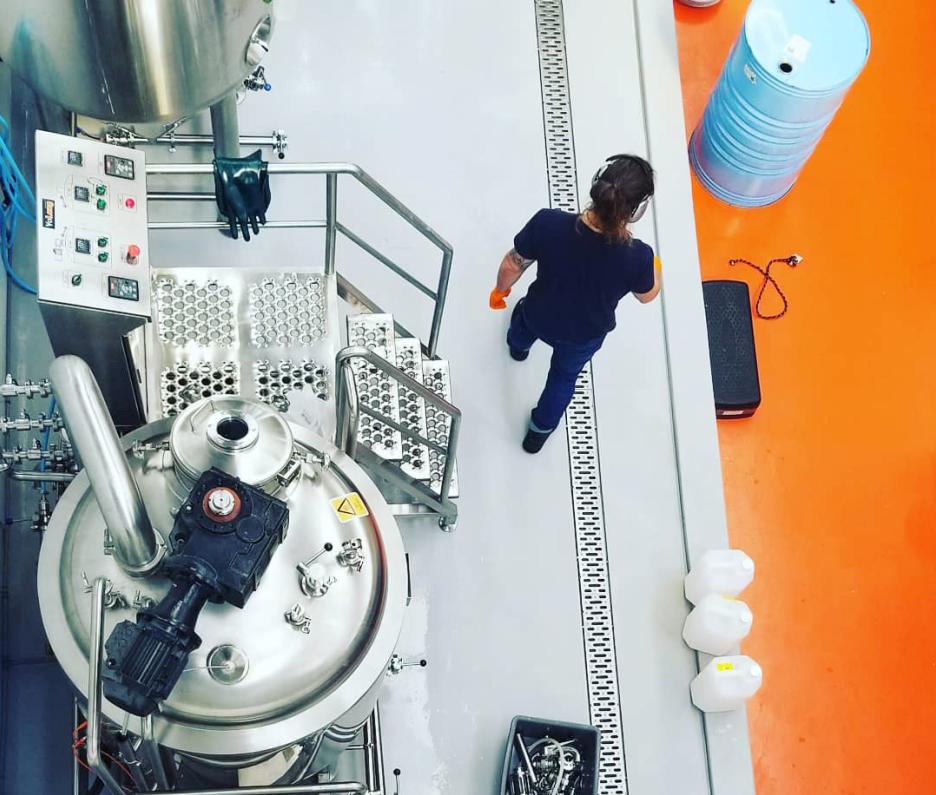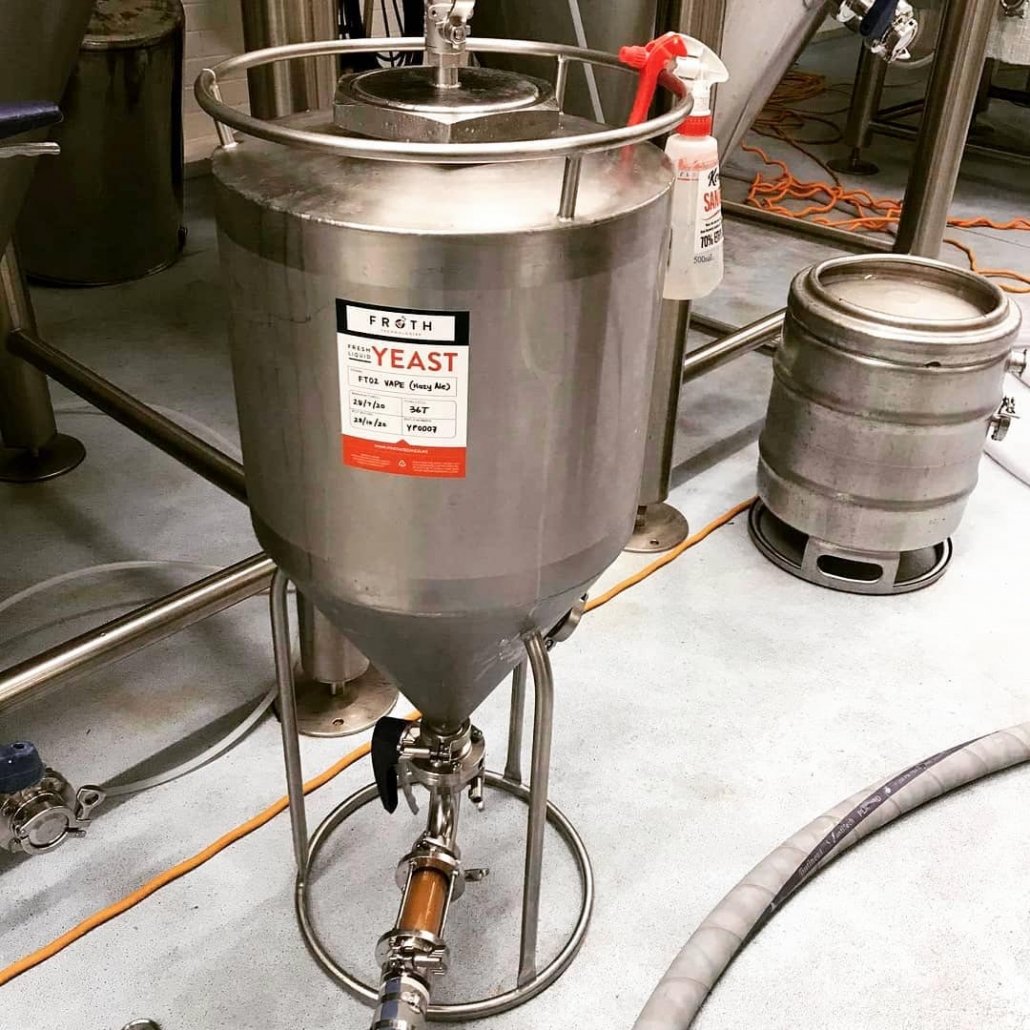Several stages and influencing factors of yeast growth
The 5 stages of yeast growth:
- Adjustment period: At this stage, the yeast has just accepted a new environment, and the temperature, pH, sugar content, water content, etc. have changed, which is the activation process of metabolism. The length of this stage fluctuates greatly, mainly depending on the type of organism, culture generation, culture conditions and other factors. The presence of oxygen during this period is critical, without which yeast cells will not be able to reproduce effectively. And this stage is easy to be invaded by bacteria, so this stage should be ended as soon as possible. The end of this phase is marked as soon as cells begin to detach.
- Acceleration phase: This phase is immediately followed by the adjustment phase. The yeast will quickly begin to decompose the fermentable sugars in the wort, and the speed of cell separation will be accelerated.
- Logarithmic growth phase: In this phase, yeast mainly performs aerobic respiration, cells proliferate logarithmically, and the proliferation rate is maximal and constant. At this point, the time required to form a new generation is the shortest (ie, the time to double the number of cells). The generation time was 90-120 min under the optimal proliferation conditions. Through the first two stages, the yeast has adapted to the new environment, and the oxygen, amino acids, sugars and trace elements in the wort are sufficient. The wort must be kept within a reasonable temperature range to maintain the benign reproduction of the yeast. Each yeast All strains can be fully grown and fermented and transferred to the stage of mass reproduction. The yeast at this stage has the most vigorous reproduction speed and the highest budding rate, which is the most suitable for the transfer stage of yeast expansion culture, and is also a suitable stage for inoculation.

- Deceleration period: Due to various factors, such as a substantial decrease in the content of fermentable sugar and oxygen, and an increase in alcohol and carbon dioxide, the logarithmic growth phase has a certain time limit, and then enters a deceleration period in which the proliferation rate gradually decreases.
- Stationary phase: During this phase, the number of microorganisms remains constant. The number of new cells formed is equal to the number of cells that died. Mass reproduction by logarithmic growth consumes a lot of nutrients and oxygen in beer, and alcohol, carbon dioxide and other metabolites inhibit the reproduction of yeast. And began to appear aging and death, and the number of deaths was basically the same as the number of yeasts that proliferated, reaching the peak of the total number of yeasts.
- Dead phase: During this phase, more cells die than new cells are formed, and the number of cells decreases. After the previous continuous consumption, the remaining nutrients in the beer are less, and the reproduction of yeast cannot be fully nourished and inhibited by a large number of metabolites. At this stage, the number of dead yeasts was higher than the number of proliferating yeasts, and the total number of active yeasts continued to decrease. The yeast begins to agglomerate, slowly sinks into the can, and may become a source of contamination of beer and a factor affecting the taste of beer, which must be discharged in time.
Influencing factors
- Oxygen: suitable oxygen. The yeast needs sufficient oxygen during the breeding period, and the oxygen should be evenly distributed in the wort, and the wort should not be exposed to oxygen during the fermentation period.
- Temperature: suitable temperature, according to different varieties of yeast, the suitable temperature is different. Generally speaking, the suitable temperature of the lower fermentation yeast is lower than the suitable temperature of the upper fermentation yeast. When heating or cooling, it should be carried out gradually and slowly, otherwise it will affect the growth of yeast.
- Stress: Steady pressure, sudden changes in pressure that are too large can cause cell walls to rupture and increase yeast mortality.
- Nutrients: Amino acid content should be sufficient
- Sterile environment to avoid contamination of miscellaneous bacteria.
- Trace elements: Insufficient zinc ion content, slow yeast growth, slow fermentation speed, high zinc ion content, fast yeast metabolism, easy aging and death.
- The number of inoculated yeast: a small number of inoculations will increase the value of yeast for a long time, which increases the risk of contamination; if the number of inoculations is large, there will be less new yeast and more mature and senescent cells, which will affect the final recovery quality.
YoLong Brewtech has been engaged in consulting, design and manufacture of professional beer brewing equipment since 2004. And are actively sharing our expertise on more brewing and equipment. If you have any questions or requirements about brewing equipment, you can contact our professional technical engineers to find the answer. Contact Us!
Frequently Asked Questions (FAQ)
1) How do the several stages and influencing factors of yeast growth interact during brewing?
- Oxygen, temperature, nutrients, and pressure shape the length and quality of each growth stage. Adequate oxygen at the adjustment and early acceleration phases shortens lag and improves cell health, while low oxygen during fermentation prevents off-flavors and oxidation.
2) What dissolved oxygen (DO) level should I target to optimize the adjustment and logarithmic phases?
- For ales, 8–10 ppm DO in cooled wort; for lagers, 10–12 ppm. Use inline oxygenation with a sintered stone and flowmeter to reach targets consistently.
3) Which temperature controls best prevent an extended lag (adjustment) period?
- Pitch at or slightly below target fermentation temperature, control coolant differentials to ±0.5–1.0°C, and avoid rapid swings (>2°C/hour). Stable temperatures help yeast transition into logarithmic growth quickly.
4) What nutrients most influence the logarithmic growth phase?
- Free Amino Nitrogen (FAN) of 150–250 mg/L for standard-strength worts, available zinc at 0.10–0.20 mg/L, and adequate sterols/UFAs (from oxygenation) support fast, healthy budding.
5) How does pitching rate influence the stationary and death phases?
- Underpitching lengthens lag and can cause stressed fermentations; overpitching shortens growth, increases the proportion of older cells, and can thin flavor. Typical pitching: ales 0.5–1.0 million cells/mL/°Plato; lagers 1.0–1.5 million cells/mL/°Plato.
2025 Industry Trends: Yeast Growth Stages and Controls
- Smarter oxygenation: breweries adopt inline optical DO sensors and closed-loop control to hit stage-specific DO setpoints without over-aeration.
- Precision micronutrients: zinc, magnesium, and yeast nutrient blends dosed via automated proportional pumps to stabilize logarithmic growth.
- Hybrid and thiol-active strains: engineered and selectively bred strains with enhanced oxygen tolerance and nutrient uptake shorten lag and improve aroma biotransformation.
- Real-time cell health analytics: mobile flow cytometry, capacitance probes, and ATP assays inform pitching and cropping decisions.
- Sustainability: CO2 harvesting and low-energy aeration (oxygen skids with recovery) reduce gas use while maintaining optimal growth.
Key 2025 Benchmarks for Yeast Growth Management
| Metric | Ales (typical) | Lagers (typical) | 2025 Adoption/Target | Sources |
|---|---|---|---|---|
| Wort DO at pitch | 8–10 ppm | 10–12 ppm | Inline control adopted by 55–65% mid-size breweries | MBAA/BA benchmarking, supplier surveys |
| Pitching rate (cells/mL/°P) | 0.5–1.0 M | 1.0–1.5 M | Automated pitching by mass or capacitance in 40–50% | MBAA TQ; White Labs/Lallemand guidance |
| FAN (mg/L) | 150–250 | 180–300 | On-line NIR monitoring in 25–35% | ASBC Methods; supplier data |
| Zinc in wort (mg/L) | 0.10–0.20 | 0.10–0.30 | Automated micro-dosing in 30–40% | ASBC; Lallemand/BSG tech sheets |
| Temperature stability (°C drift/hr) | ≤1.0 | ≤0.5 | PLC control common in 70%+ new installs | Brewers Association brewery operations reports |
| Time to high kräusen | 12–24 h | 24–48 h | Reduced 10–20% with optimized O2/nutrients | OSU/Weihenstephan research summaries |
References:
- Brewers Association (BA) Technical/Benchmarking resources: https://www.brewersassociation.org
- American Society of Brewing Chemists (ASBC) Methods of Analysis: https://www.asbcnet.org
- Master Brewers Association of the Americas (MBAA) Technical Quarterly: https://www.mbaa.com
- Supplier technical guidance: White Labs, Lallemand, Fermentis
Latest Research Cases
Case Study 1: Inline Oxygen Control to Shorten Lag in Lagers (2025)
Background: A 60 bbl lager-focused brewery experienced long adjustment periods (24–36 h) and inconsistent attenuation.
Solution: Installed inline DO sensor with PID-controlled pure O2 dosing; standardized pitching rate by mass and added zinc sulfate to 0.15 mg/L.
Results: Lag reduced to 16–20 h; average attenuation variability dropped from ±2.5% to ±0.8%; sensory panel noted cleaner sulfur profile and improved consistency.
Sources: MBAA TQ practitioner report; BA cellar operations seminars (2024–2025).
Case Study 2: Nutrient and Temp Profiling for High-Gravity Ales (2024)
Background: Production of 18°P ales led to stalled logarithmic growth and elevated diacetyl.
Solution: Stepped oxygenation (10 ppm at pitch + 4 ppm 6 h post-pitch), staged yeast nutrient including FAN booster and zinc, and a controlled temperature rise of 1°C/day after high kräusen.
Results: Time to terminal gravity reduced by 18%; VDK rest shortened by 24 hours; cell viability after cropping improved from 86% to 93%.
Sources: ASBC conference posters; supplier application notes (Lallemand, White Labs).
Expert Opinions
- Dr. Tom Shellhammer, Professor of Fermentation Science, Oregon State University
Viewpoint: “Managing oxygen, FAN, and zinc at the start of fermentation determines the trajectory of the logarithmic phase—get those right and most downstream issues vanish.”
Source: OSU Fermentation Science publications and seminars (2023–2025). - Prof. Matteo Berna, Technical Director, VLB Berlin (Versuchs- und Lehranstalt für Brauerei)
Viewpoint: “Temperature ramps must be gradual; rapid shifts stress membranes and shorten yeast life, pushing breweries prematurely into stationary and death phases.”
Source: VLB Brewing Con seminars (2024/2025). - Chris White, PhD, Founder, White Labs
Viewpoint: “Accurate pitching rates and real-time viability checks are non-negotiable. Overpitching can flatten ester profile and reduce healthy growth cycles for repitching.”
Source: White Labs Yeast Brewing Guides.
Practical Tools/Resources
- ASBC Methods: FAN (Wort-12), Zinc determination, DO measurement protocols
https://www.asbcnet.org - MBAA TQ and podcasts on yeast health, oxygenation, and nutrients
https://www.mbaa.com - Brewers Association Best Practices: cellar oxygen control, nutrient use, repitching guidelines
https://www.brewersassociation.org - White Labs Yeastman and calculators (pitch rate, viability)
https://www.whitelabs.com - Lallemand Brewers Corner (yeast nutrition, temperature management, zinc guidelines)
https://www.lallemandbrewing.com
SEO note: Consider internal links targeting “several stages and influencing factors of yeast growth,” “wort oxygenation best practices,” and “yeast nutrient and zinc management.”
Last updated: 2025-08-28
Changelog: Added 5 FAQs; 2025 trends with benchmark table; two recent case studies; expert viewpoints; curated tools/resources aligned to yeast growth stages and influencing factors
Next review date & triggers: 2026-02-01 or earlier if new ASBC methods, major supplier guideline updates, or BA benchmarking data on oxygen/nutrient practices are released
Share this entry
Interested in learning more about Brewing Systems including additional details and pricing information? Please use the form below to contact us!
YOLONG BREWERY EQUIPMENT FAQS
- Commercial Brewery / Craft Brewery / Microbrewery / Nanobrewery
- What is The Difference Between Craft Beer and Industrial Beer?
- The Bespoke Differences In Custom Brewing Systems
- Everything You Need to Know About Kettle Souring
- How to Choose Brewing Equipment for Your business?
- How To Choose The-Best Partner To Build Your Commercial Microbrewing System?
- Two Detection Sensors That You Need To Use In Your Brewhouse System
- Remote Control Applications in Brewing Equipment/How does it work?
- How To Clean Your Brand New Brewery Tanks?



